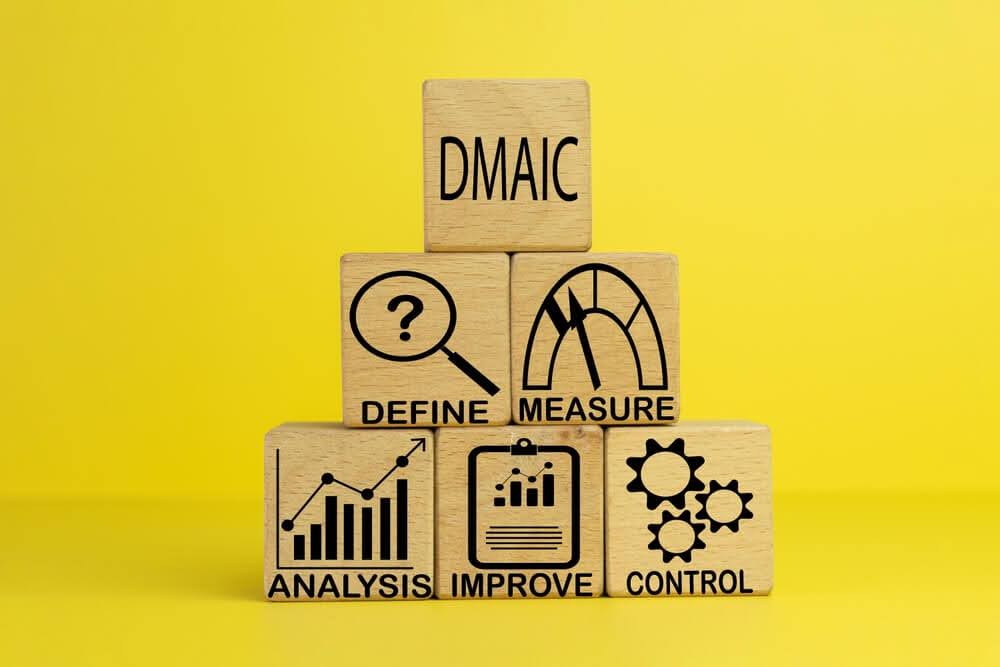In today’s fast-paced world, technical skills alone are not enough to ensure success. Soft skills, such as communication, leadership, and problem-solving, are increasingly important for personal and professional growth.
In this comprehensive guide, we’ll walk you through how to start a soft-skill training institute. It will cover everything from planning and legal requirements to curriculum development, staffing, marketing, and measuring success.

Soft Skill Examples
Soft skills, also known as interpersonal skills, are a set of non-technical abilities that allow individuals to interact effectively with others. They include communication, teamwork, problem-solving, leadership, adaptability, and emotional intelligence. Unlike hard skills, which are job-specific and can be measured, soft skills are more subjective and difficult to quantify. Nonetheless, they are essential for professional success and personal growth.
Importance of Soft Skills Development
The development of soft skills is vital in today’s fast-paced and interconnected world. As automation and artificial intelligence continue to advance, the human touch becomes increasingly valuable. Soft skills allow individuals to navigate complex situations, foster strong working relationships, and excel in their chosen careers.
On top of that, employers recognise the importance of these skills and actively seek candidates who possess them. Moreover, developing soft skills can lead to improved job satisfaction, increased productivity, and better career prospects.
The Growing Demand for Soft Skill Training
The increasing recognition of the value of soft skills has led to a surge in demand for training in this area. Companies are investing in soft skill development programmes for their employees, while individuals are seeking out training to enhance their career prospects. This growing demand presents a prime opportunity for entrepreneurs looking for answers to how to start a soft skill training institute.
How to Start a Soft Skill Training Institute
It’s a long process but don’t worry. This guide will help you to understand the essential steps of how to start a soft skill training institute, from planning and staffing to curriculum development and marketing strategies. Let’s go through and understand the process in detail.

Planning Your Soft Skill Training Institute
Let’s see how to plan and execute your initiatives about how to start a soft skill training institute.
First: Identifying your Niche
Before diving into the world of soft skill training, it’s crucial to determine your niche. This means identifying the specific soft skills you want to focus on and the target audience you aim to serve. For example, you could choose to specialise in communication skills for healthcare professionals or leadership training for new managers. If you focus on a specific niche, you can develop tailored courses and marketing strategies that cater to the unique needs of your target audience.
Second: Market Research and Competition Analysis
Conducting thorough market research and competition analysis are crucial to the success of your training institute. Start by identifying the key players in your chosen niche, examining their course offerings, pricing, and marketing strategies.
Also, assess the market demand for your services and consider factors such as geographical location, target audience size, and potential growth opportunities. This information will help you make informed decisions about your business strategy and identify potential competitive advantages.
Third: Setting your Goals and Objectives
With your niche and market research in hand, it’s time to establish clear goals and objectives on how to start a soft skill training institute. These should be specific, measurable, achievable, relevant, and time-bound (SMART).
Besides that, your goals might include revenue targets, enrolment numbers, or client satisfaction rates. Having well-defined objectives will help you stay focused and ensure your business remains on track for success.

Legal and Regulatory Requirements
You should have a good understanding of the legal requirements. Let’s go through them step by step.
Firstly: Business Registration
To understand how to start a soft skill training institute, you will need to know how to register your business with the appropriate government authorities. This process typically involves selecting a business structure (e.g., sole proprietorship, partnership, or limited company) and registering your business name.
Make sure to consult with a legal expert or accountant to determine the best structure for your needs and to ensure compliance with all relevant regulations.
Secondly: Licences and Permits
Depending on your location and the nature of your business, you may require specific licences or permits to operate your soft skill training institute. These could include educational permits, health and safety certifications, or zoning permits for your chosen premises. Be sure to research the specific requirements in your area and obtain all necessary documentation before commencing operations.
Thirdly: Insurance Requirements
Obtaining appropriate insurance coverage is an essential step in setting up your soft skill training institute. At a minimum, you should consider general liability insurance to protect against potential claims arising from accidents or property damage.
Additionally, you may need professional indemnity insurance to cover claims related to the quality of your training services. Consult with an insurance expert to ensure you have adequate coverage for your business.

Developing Your Curriculum
Before learning how to start a soft skills training institute, you must design and develop the curriculum properly. To do so:
First: Researching Industry Standards
When developing your curriculum, it’s essential to research industry standards and best practices. Stay up-to-date on the latest trends and methodologies in soft skill training by attending conferences, joining professional associations, and regularly reviewing relevant literature. This knowledge will enable you to create a curriculum that meets the needs and expectations of your target audience, ensuring the success of your training institute.
Second: Designing Courses and Lesson Plans
Once you have a solid understanding of industry standards, it’s time to design your courses and lesson plans. Consider the specific learning objectives for each course and how you can help your students achieve them.
Develop engaging and relevant content that caters to various learning styles, such as visual, auditory, and kinesthetic. Be sure to include a mix of lectures, discussions, role-plays, case studies, and other interactive learning methods to create a dynamic and effective learning experience.
Third: Incorporating Interactive Learning Methods
Interactive learning methods are crucial for successful soft skill development. These techniques help learners apply their new knowledge in real-world situations, fostering the development of practical skills.
Examples of interactive learning methods include role-plays, simulations, group exercises, and peer feedback sessions. Ensure that your curriculum provides ample opportunities for students to engage with the material and practise their newfound skills.

Staffing Your Institute
This is a very crucial part as you are about to know how to start a soft skill training institute. To ensure the success of your training institute, hire skilled trainers with relevant qualifications and experience, as well as support staff and administrative personnel who can handle essential tasks like scheduling and customer service. It includes
One: Hiring Skilled Trainers
The quality of your trainers will significantly impact the success of your soft skill training institute. Look for candidates with relevant qualifications, such as certifications or degrees in fields like psychology, education, or human resources.
Additionally, seek out individuals with strong interpersonal skills and experience in training or coaching. To attract the best talent, offer competitive salaries, benefits, and opportunities for professional development.
Two: Training and Development for Staff
To ensure the highest quality of training, invest in ongoing professional development for your staff. Provide opportunities for trainers to attend workshops, conferences, or online courses to stay current on industry trends and best practices. Encourage a culture of continuous learning and improvement, and consider implementing regular performance evaluations to identify areas for growth and development.
Three: Support Staff and Administrative Personnel
In addition to skilled trainers, your institute will require support staff and administrative personnel to handle tasks such as scheduling, enrolment, and customer service. Hire individuals who share your commitment to providing exceptional service and education, and who possess the necessary skills and experience to fulfil their roles effectively.

Marketing Your Soft Skill Training Institute
So how to market your training institute? Marketing your institute is vital while answering the question of how to start a soft skill training institute. Let’s have a broader look:
Firstly: Creating a Strong Online Presence
A strong online presence is crucial for attracting potential clients to your soft skill training institute. Develop a professional website that showcases your course offerings, trainer qualifications, and success stories. Use search engine optimisation (SEO) techniques to improve your visibility in search engine results.
Additionally, establish a presence on relevant social media platforms and engage with your audience through regular content updates, promotions, and networking opportunities.
Secondly: Networking and Partnerships
Building connections with industry professionals, local businesses, and educational institutions can help raise awareness of your soft skill training institute and generate referrals.
Attend networking events, join professional associations, and establish partnerships with complimentary service providers. Consider offering co-branded workshops or promotional discounts to encourage collaboration and mutual growth.
Thirdly: Utilising Traditional Marketing Methods
While a strong online presence is crucial, don’t overlook the value of traditional marketing methods. These can include print advertising in local newspapers or industry publications, direct mail campaigns, and distributing promotional materials at relevant events or locations. Besides, tailor your marketing strategies to your target audience and track the effectiveness of each method to optimise your marketing strategy over time.

Measuring Success and Continuous Improvement
It’s all about regularly monitoring your institute’s progress by tracking key performance indicators, gathering feedback from students and clients, and adapting your curriculum and teaching methods to stay responsive to market trends and demands.
As you are determined to know how to start a soft skill training institute, you should also be careful about this section too. Let’s go through them step by step.
First: Monitoring and Evaluating Progress
Regularly monitoring and evaluating your institute’s progress is essential to ensure continuous growth and success. Track key performance indicators (KPIs) such as enrolment numbers, course completion rates, and client satisfaction scores. Analyse this data to identify areas of strength and opportunities for improvement, and use this information to inform your ongoing business strategy.
Second: Gathering Feedback and Testimonials
Soliciting feedback from students and clients is a valuable tool in how to start a soft skill training institute. Encourage participants to complete course evaluations and provide suggestions for enhancements. Use this feedback to refine your curriculum, teaching methods, and overall student experience. Additionally, gather positive testimonials from satisfied clients to use in your marketing materials and online presence.
Third: Adapting to Market Trends and Demands
As the soft skill training industry continues to evolve, it’s vital to stay adaptable and responsive to market trends and demands. Regularly review industry developments, competitor offerings, and emerging soft skills to ensure your courses remain relevant and valuable.
Moreover, be prepared to adjust your curriculum, teaching methods, and marketing strategies as needed to stay ahead of the competition and provide the highest quality training to your clients.
Conclusion
By now, you must have understood how to start a soft skill training institute. Starting a soft skill training institute can be a fulfilling and profitable endeavour. By carefully planning your business, navigating legal requirements, developing a high-quality curriculum, hiring skilled trainers, and implementing effective marketing strategies, you can position your institute for long-term success. Finally, monitor your progress, gather feedback, and adapt to industry trends to ensure your training institute remains a leader in the field of soft skill development.
FAQs
1. How do I become a skilled trainer?
Becoming a skilled trainer requires a combination of education, experience, and personal qualities. Begin by obtaining relevant qualifications, such as degrees or certifications in fields like education, psychology, or human resources.
Then, gain practical experience by working in training or coaching roles, and seek out opportunities for professional development, such as workshops or conferences. Additionally, cultivate strong interpersonal skills, effective communication, and a genuine passion for helping others learn and grow.
2. Which are the 5 modules of soft skills?
While there are many different soft skills, five key modules typically covered in training programs include communication, teamwork and collaboration, problem-solving, adaptability, and emotional intelligence. Moreover, these modules encompass a range of competencies that enable individuals to interact effectively with others, navigate complex situations, and excel in the workplace.
3. What is included in soft skills training?
Soft skills training typically includes a variety of interactive and engaging activities designed to help participants develop specific interpersonal abilities. This may involve lectures, discussions, role-plays, case studies, group exercises, simulations, and peer feedback sessions. Also, the goal of soft skills training is to enable learners to apply their newfound knowledge and skills in real-world situations, fostering practical skill development.
4. How do I start soft skills training?
To start soft skills training, begin by identifying your goals and objectives, such as improving communication or enhancing leadership abilities. Research reputable training providers or programs that align with your goals, and consider factors such as course content, trainer qualifications, and delivery methods. Once you have chosen a suitable training program, enrol and actively engage with the learning process by participating in activities, asking questions, and reflecting on your experiences.
5. How do you implement skills training?
Implementing skills training involves developing a well-structured and engaging curriculum, providing effective training materials, and employing skilled trainers who can deliver the content in an accessible and engaging manner.
Besides, ensure that your training program incorporates interactive learning methods, such as role-plays, group exercises, and case studies, to encourage practical skill development. Regularly evaluate the effectiveness of your training program and make adjustments as needed to ensure continuous improvement.
6. How do you teach soft skills effectively?
Teaching soft skills effectively requires a combination of engaging content, interactive learning methods, and a supportive learning environment. Develop course materials that cater to various learning styles and incorporate activities that allow learners to practise their newfound skills in realistic situations.
Also, provide opportunities for learners to receive feedback from trainers and peers, and encourage reflection on their experiences to promote deeper understanding and skill development.
7. What are the expectations of soft skills training?
Expectations of soft skills training typically include developing specific interpersonal competencies, such as communication, teamwork, or problem-solving. Participants should expect to engage in interactive learning activities that encourage practical skill development, receive constructive feedback from trainers and peers, and reflect on their experiences to deepen their understanding. Additionally, training providers should deliver high-quality, relevant content in an accessible and engaging manner.
8. What is the purpose of soft skills training?
The purpose of soft skills training is to help individuals develop the interpersonal competencies needed for professional success and personal growth. Furthermore, by enhancing their communication, teamwork, problem-solving, adaptability, and emotional intelligence, learners can improve their ability to navigate complex situations and excel in their chosen careers.
9. How can I market my soft skill training institute?
Marketing strategies for your institute may include creating a strong online presence, networking and partnerships. You can also utilise traditional marketing methods such as print advertising, direct mail campaigns, and distributing promotional materials.







 March 08, 2024
March 08, 2024






